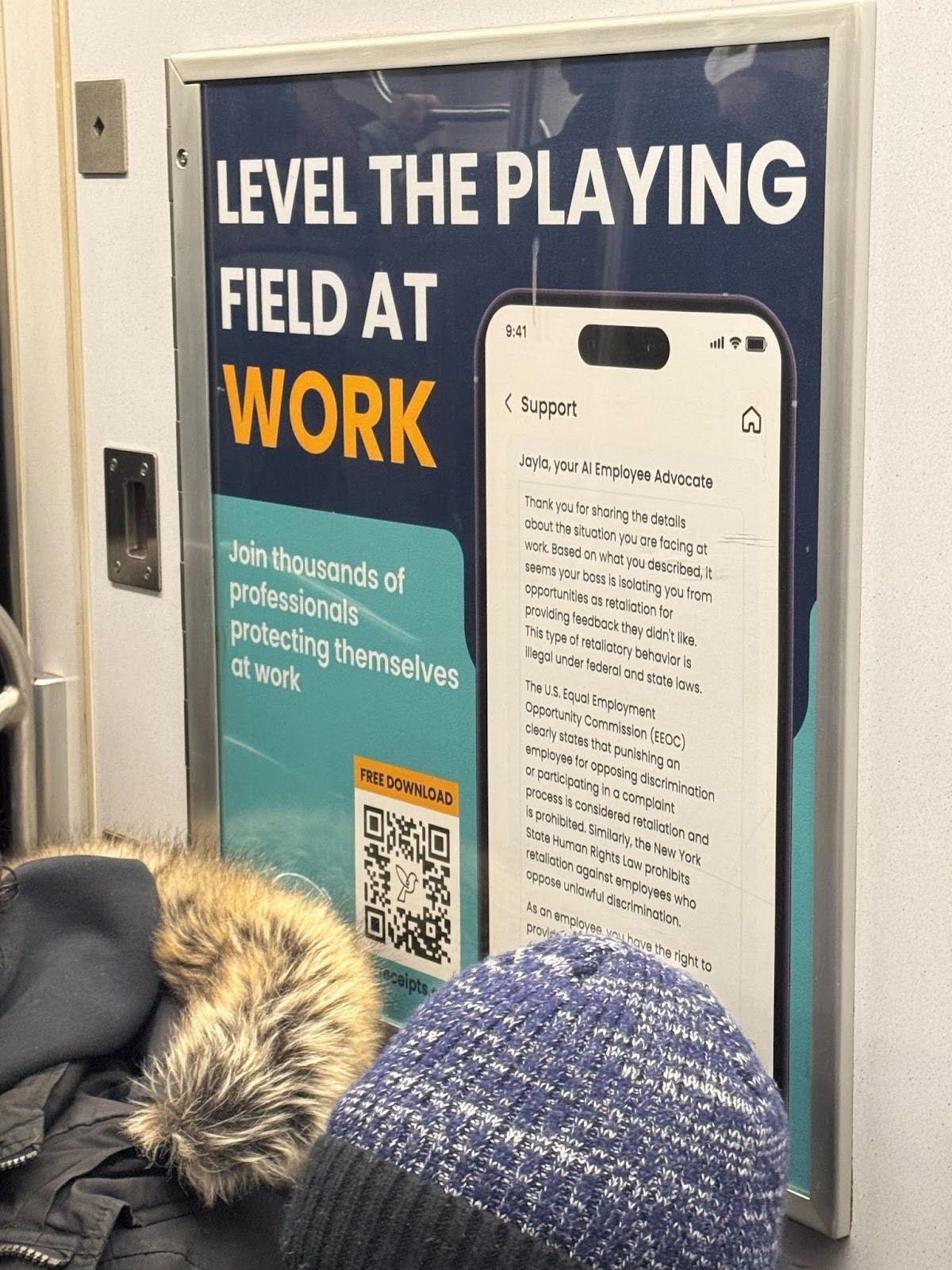 Shanice Peters, "Brooklyn Bound 4 Train", 2025
Shanice Peters, "Brooklyn Bound 4 Train", 2025
A federal agency of the United States, the Equal Employment Opportunity Commission (EEOC) promotes equal employment rights based on race, sex, gender, nationality, age, and religion.
The Equal Employment Opportunity Commission was first recognized as the Equal Pay Act of 1963, which established equal wages for men and women in similar occupations. However, the protections only applied to one particular group—not specifically to black individuals. Amongst many other inequalities during this period, people of color were heavily discriminated against in work environments. As conversations of equality were beginning to rise, it wasn’t until the Civil Rights Act of 1964 that the section announced under Title VII outlawed workplace discrimination based on race.
After codifying equal pay for men and women, the unfair treatment in the context of race became the primary concern. The Civil Rights Movement advocated for fair employment opportunities, among other issues. To ensure workplace non-discrimination based on race, The Equal Employment Opportunity Commission (EEOC) opened its doors in 1965 to fulfill Title VII and ensure appropriate progress on employment inclusion. However, the EEOC did not gain the authority to file lawsuits against private companies until 1972.
What is the purpose of the EEOC?
The Equal Employment Opportunity Commission aims to ensure impartiality for employees. Its scope includes individuals who are applying for job opportunities. It offers protections against discrimination in hiring, firing, wages, benefits, training, promotions, and harassment. As of 2025, over 50 field offices operate on all aspects of EEOC.
What should we know?
President Donald Trump has issued executive orders that impact Diversity, Equality, and Inclusion (DEI). DEI efforts helped prevent discrimination by race, gender, sex, etc. Amazon, Target, and Walmart are just a few companies that have chosen to terminate or alter their DEI policy. As a result, a boycott was organized on Friday, February 28, 2025, in support of continuing the spirit of DEI. This was one of several reactions from civil society.
It is important to point out that, despite recent administration change, EEOC continues to have bipartisan leadership and prioritize its charter (with a Republican Acting Chair and Democratic Commissioner, as of early 2025). The U.S. Equal Employment Opportunity Commission’s website states, “Under the leadership of Acting Chair Andrea Lucas, the EEOC remains open for business and fully committed to protecting the civil rights of all Americans, advancing individual equal opportunity for all, and relentlessly combatting private sector and public sector discrimination.”
It can be easy to associate DEI and EEOC with the same meaning. Although they are similar, the two terms are, in fact, different. In this article analyzing the interplay between the two, defense reporter Anastasia Obis explains that while Equal Employment Opportunity is the legal basis of workplace anti-discrimination, diversity programs prevent bias and related litigation. Retreating from the latter means we still have to address the same concerns but reactively instead of proactively.
DEI is proactive. Its goal is to guard against discrimination in various environments. The DEI organization helps address systemic inequality. It is more effective than the EEOC. The removal of DEI will impact workplaces and leave certain individuals defenseless when treated unfairly.
It is important to know the difference between the two when faced with workplace discrimination. Familiarizing employees with the EEOC can still be essential for employment in hopes of creating an equal work environment. Being aware of these rights will prevent discrimination. Although the Trump administration impacted DEI policies, people are encouraged to stand up against workplace discrimination by supporting the EEOC in the mission it was created for.

